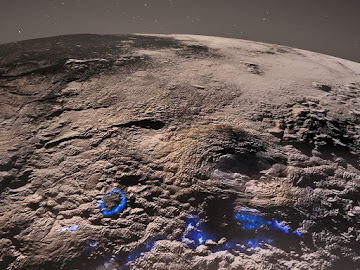The discovery suggests the dwarf planet may be harboring a subsurface liquid ocean
Pluto's network of enormous ice volcanoes has been discovered through images of its surface. The eruptions of the volcanoes seem to have occurred in an ice slush only lately, according to the astronomers who made the discovery, which was reported this week in Nature Communications.
According to study author Kelsi Singer, a planetary scientist at the Southwest Research Institute, there are no other regions on Pluto that resemble this location. It is wholly distinctive within the solar system.
The dwarf planet's moons and surface were captured in photographs by NASA's New Horizons spacecraft during a flyby in July 2015. Astronomers may now get a closer look at Pluto than ever before thanks to New Horizon's photos, which helped them locate a region with two towering peaks thought to be ice-filled volcanoes. Scientists now claim that they have discovered evidence of erupted ice lava in the photos, proving that Pluto's impressive peaks are actually a group of icy volcanoes.
Singer tells Robin George Andrews for the New York Times, "We tried to find some other way to describe it, but we just truly couldn't."
Cryovolcanoes are ice volcanoes that don't erupt with heated magma but instead exude a mixture of water and lava.
According to Singer, the frozen substance that spilled out of a volcanic vent onto Pluto's surface was probably more like toothpaste or a slushy mixture of ice and water. "Liquid water cannot last long on Pluto's surface due to its extreme temperature. The enormous domes that are seen and the uneven topography that is present across this region were sometimes created by the flow of material.
Since there are no impact craters in the vicinity of the volcanoes, it is likely that the colony of cryovolcanoes was active between 100 and 200 million years ago. It's probable that the ice volcanoes will erupt in the future given their recent activity.
What caused the massive ice volcanoes to form?
Therefore, how did these icy domes develop? Due of the terrain's strong highs and lows, the researchers ruled out typical erosion. Additionally, they don't think there is any indication of glacial erosion or sublimation erosion in the hummocky landscape.
What is left after that? The experts believe that ice volcanoes are the most plausible cause. Singer remarked:
We often discover things when we least expect them as we explore new locations in the solar system. These enormous, odd-looking cryovolcanoes that New Horizons has discovered are a remarkable example of how our understanding of volcanic activity and geologic activity on frozen worlds is growing.



0 Comments